Here’s how you can spot tree disease at your Belleville, IL property
Property owners in the Belleville, IL area are proud of the richness of their land. From vibrant foliage to tall, towing trees, there’s a lot to be proud of. However, what happens when one of those trees catches a disease? That’s right; diseases aren’t just for humans, trees can get them too. In the rest of this article, we’ll go over the things that you can look for when deciphering if your trees have the disease, and we’ll talk about what we can do to stop the problems in their tracks. Read more below, and get in touch with the friendly professionals at Merritt’s for the service you need to keep your trees disease-free!
Strange Fluid
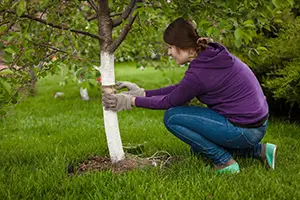
One warning sign of a diseased tree could be fluid that seeps out of the bark and pools around the base of the tree. If diseased, the fluid will often have a sour odor, and it will leave dark stains around the trunk of the tree as it runs to the base. Look for this fluid in the Spring and Summer as these are the most popular times for it.
Strange Growths
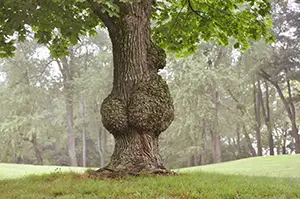
Another sign that your tree may have a disease is hard, gray growths that grow on trees such as hickories, cherries, maples, and birches. The name for this disease is Fomes fomentarius, and it will continue to grow until it’s ultimately removed.
Peeling Bark

The bark on any tree is vital to the protection and growth of the tree. When it starts to peel off on its own, it means that it’s not getting the right amount of water and nutrients, which could be due to tree disease. At this point, if you want to save the tree, call a certified arborist.
Black Flowers
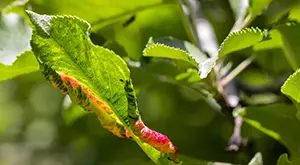
This is a common symptom of the tree disease, Fire Blight. This disease turns the flowers or leaves of the infected plant black and causes them to droop severely. Once this tree disease takes hold, it can spread throughout the plant rapidly. If you notice this problem, you need to have an arborist out immediately if you plan on saving the tree.
Light Brown “Shelves”
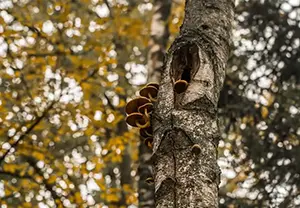
The fungus inonotus dryadeus is a fungus that causes rotting in trees like oak trees. This fungus stunts the growth of the branches and infects the rest of the tree. You’ll notice this fungus when brown shelf-like growths form near the base of the tree and eventually turn black.
Yellow or Brown Leaves
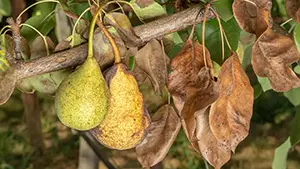
Are your trees receiving plenty of water and sun, yet you’re watching the trees turn brown or yellow? This could be caused by Armillaria root rot, which turns the leaves yellow or brown and causes excessive wilting. This fungus takes hold in the soil and affects the entire tree.
Powdery Mildew
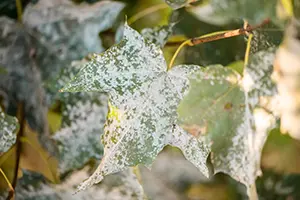
You’ll mostly notice this symptom in the late season when high humidity levels cause this fungus to form on many types of trees. Small white spots will appear slowly and must be dealt with to save the tree. Letting this problem persist could result in losing the tree.